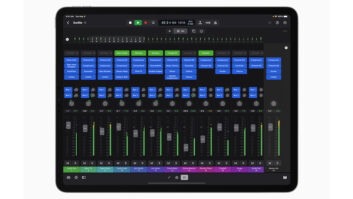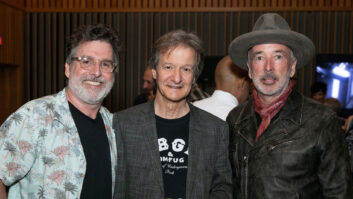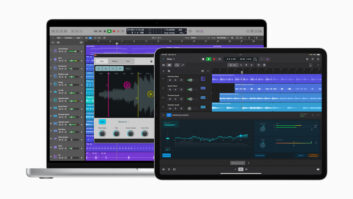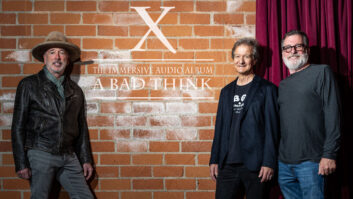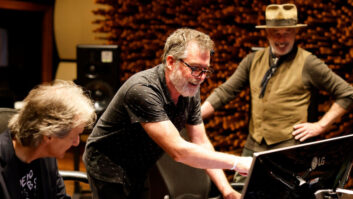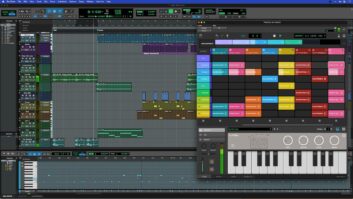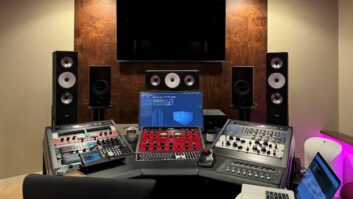In my April 2010 column written after the debut of Apple’s iPad, I wrote, “The age of desktop dominance is over, which has major implications for our industry.” And we found out what those implications were at the 2011 Winter NAMM: iPads outnumbered desktops, laptops and netbooks. Not only were there plenty of apps, but even those companies not selling apps were still using iPads to play back demos, and journalists were blogging directly from their iPads (typing on a cell phone is sooo 2010). Given that the iPad wasn’t even on the market during last year’s NAMM, the way this technology has made such a thorough, rapid impact is remarkable.

As I also wrote in that column, “A universal remote for PA systems is one obvious app-walk around the room and tune [your system].” Well, PreSonus, Allen & Heath and Yamaha must have thought it was pretty obvious too, because they had impressive iPad apps for mixer control at the show. Think about it…if you’re a musician onstage feeding into a PreSonus StudioLive mixer, you can create your own monitor mix from an iPad; A&H’s iLive MixPad app even includes setup tools like a real-time analyzer. But where do you put your iPad? In one of the many devices designed to attach your iPad to a mic stand, of course.
One complaint about the iPad was that it seemed like an unlikely candidate for live use, as it doesn’t exactly meet “rock ’n’ roll specs.” Hooking up I/O and a charger can be a problem, and most iPad docks are designed with consumers in mind—you’ll find a couple small speakers, and the ability to tilt the iPad if you want to look at a movie. So, enter Alesis with its StudioDock: It’s an iPad dock designed with pro audio in mind, including a sleek metal frame, balanced I/O, video-out, built-in charging, and the like. If you want to use something like IK Multimedia’s Ampli- Tube for the iPad or Agile Partners’ iPad version of the amp sims they designed for Peavey, the StudioDock simplifies the process considerably.
But what if you want to use, say, Wayoutware’s SynthX synthesizer app, or Korg’s Electribe app? Akai has that covered with the SynthStation 49, a 49-key keyboard controller with iPad dock. But it also underscores just how fast technology changes; it was only a year ago Akai showed its SynthStation 25 for the iPhone. Now iPhone apps are ceding to the iPad, as companies find the iPad a more hospitable development environment. (Nor was Akai alone— StudioLogic’s Acuna 88 is an 88-key controller that also provides a home for itinerant iPads.)
IK Multimedia introduced its iRig vocal processor, which has a simplified touch interface. It reminded me of TCHelicon’s VoiceLive Touch, except that IK took advantage of Apple’s economies of scale, so (assuming you have an iPad) adding the necessary software is relatively inexpensive.
Control surfaces are a great fit for the iPad, and Yamaha was showing four apps designed to control the Motif XF synthesizer—clinician Phil Clendenin switched seamlessly among controlling the sequencer as if it was a mixer, editing sounds, altering the arpeggiator and doing live-performance gestures. One of the intriguing features here is that the iPad can supplement the keyboard’s controls, not necessarily replace them. For example, the XF has eight sliders for real-time control; the iPad can mirror those, or provide a second set of eight virtual faders, so you then have handson control for 16 different parameters.
The iPad invasion didn’t stop there. There was a slide-trombone app where sliding your finger across the iPad moved the virtual slide, and Jammit showed an educational/jamming/ practicing application based around the iPad. At the Line 6 meeting room, I found Marcus Ryle getting his groove on with an iPad, a $79 battery-powered keyboard controller, a sequencer app and the Line 6 MIDI Mobilizer—still the only iOS-compatible MIDI interface on the market.
So with a cornucopia of inexpensive apps, is there any downside? Well, consider the transitory nature of consumer electronics. Soon, the market will be flooded with competing tablets, and companies will be forced to decide which ones are worth supporting. And there’s no guarantee Apple won’t move the iPad’s goal posts over time, as has happened with its desktop computers (like when the company removed the floppy drive, changed from PowerPC to Intel architecture, dropped FireWire or ExpressCard slots from some laptops, and the like). Unlike, for example, a hardware control surface that’s designed to have a useful life of many years, the iPad comes dangerously close to the “disposable consumer electronics” category.
For now, though, the high-tech part of the music industry is turning into an iPad world. Never has software done so much, for so little and so universally.
Craig Anderton is executive editor of EQ magazine, editor in chief of harmonycentral.com, and wrote the classic book, Home Recording for Musicians.

